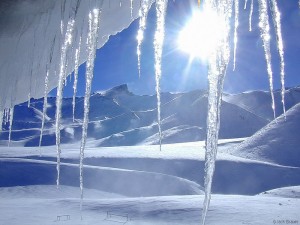 Now that we’re into January, it’s not really a shock that we’re being hit with this question:
Now that we’re into January, it’s not really a shock that we’re being hit with this question:
“Help! How Do I keep my doors and locks from freezing?”
Your car, heating units, and boats aren’t the only items that take a beating when it comes to winter weather. Cold weather can also wreak havoc on your hardware, but never fear! We have some simple tips to take the bite out of cold weather damage to your hardware this season. We think this list will help.
1) Weather stripping exists for a reason.
Cold air seeps in through cracks and gaps between your door and its frame. All that’s doing is contributing to higher heating bills. It’s a small thing, but needs to be fixed. Sometimes those gaps are so small you can’t even see them. Here’s a pro tip: Take a lighter and move it around the edge of your door. Mark where the flame flickers—there’s another area that needs to be corrected. Updating your weather stripping seals is an easy, relatively inexpensive fix, and the payoffs are huge.
2) Threshold, meet door.
From time to time a gap will form between your threshold and your door. This area also lets cold air sneak in. Getting the door and the threshold to meet properly will close that gap and reduce heat loss, and heating bills. Installing a door bottom, door sweep, or different style of threshold can help seal gaps at the bottom.
3) Lubrication is key.
A vital part of any door is its hinges and hinges need to be well-lubricated. An under-lubricated hinge is a hinge that is more likely to freeze over. On top of the no-freeze factor, a well-lubricated hinge may increase its longevity.
4) Don’t let slip hazards slip by YOU
Ensuring your entryways are free of any slip hazards does reduce your liability, you’re going to want to be cautious when you’re slinging that salt and chemical melts around. This can prevent your concealed vertical rod exit devices from operating correctly.
5) Speaking of concealed vertical rod exit devices…
If concealed vertical rods are used, make sure you don’t have any debris blocking the threshold latch pocket. Sweep or vacuum any debris that might be in the latch pocket. This allows the bottom rod to extend fully and secure the door properly.
6) Have you thought about installing insulating films?
Insulating films can sometimes be applied to glass doors and surrounding glazing to increase the thermal rating of the glass.
7) If your door is taking an eternity to close, you might have a problem.
Sometimes a simple adjustment works wonders. Have you noticed your door taking too long to close? As a general rule of thumb, doors should take at least five seconds to close to allow for entry and exit. If it’s taking longer, try and figure out why, and fix it.
8) The Latch & the Strike: A Love Story
Latches and strikes should be close. Really close. The closer the better, in fact. This will help seal the door tighter and will reduce the amount of latent movement in the door from the HVAC system and/or outside wind. It’s a good thing they like one another.
9) Adjust your blower contacts.
Yet another simple adjustment that wields pretty stellar results. By adjusting your blower contacts, this will help drive cold air away from the entrance of your delivery area.
10) Keep your doors closed as much as possible.
Look at that! I saved the easiest for last. Keeping your doors closed is going to reduce heat loss from your building. This alone will cause your pockets to weep tears of joy.
Got questions? Need help winterizing your hardware? We can help. Give us a buzz and we’ll be happy to assist. Happy Winterizing!
